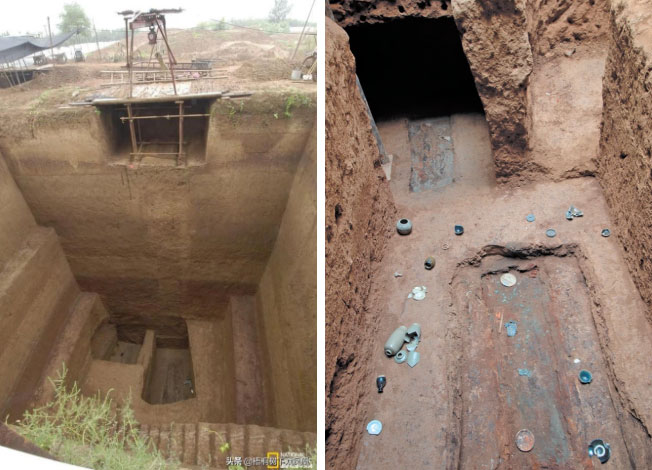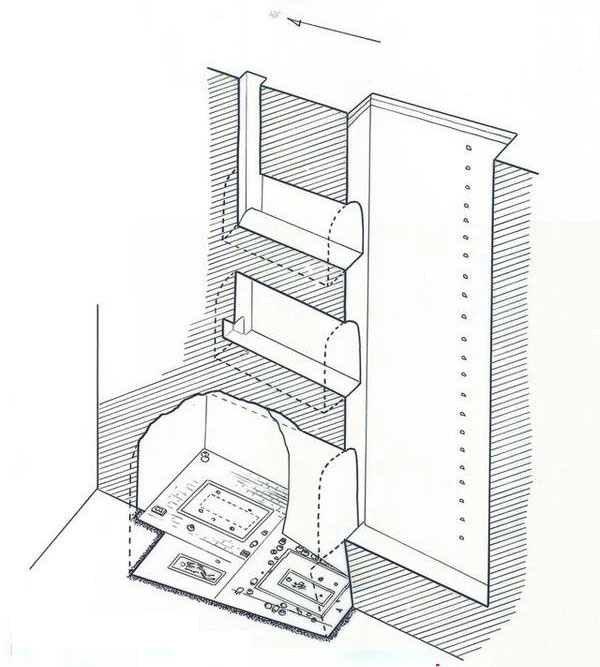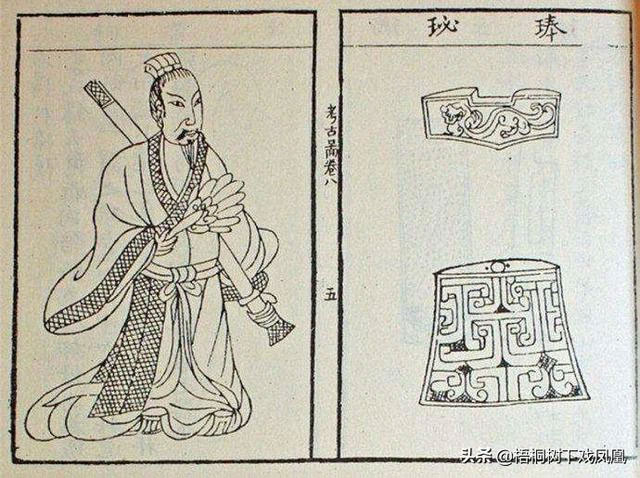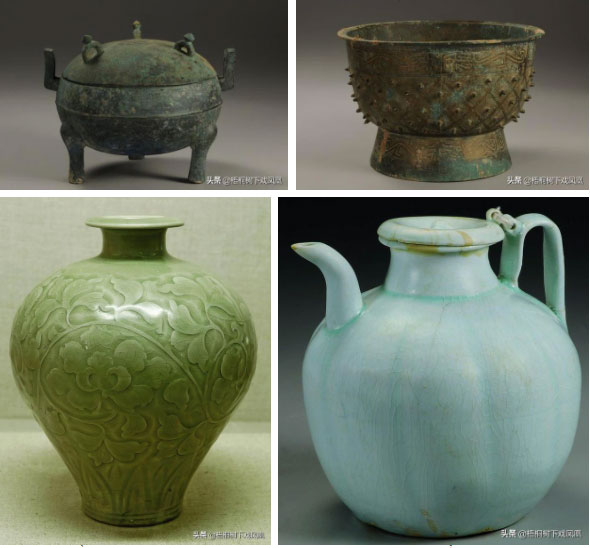This burial system has utilized a unique “nested tomb” design to prevent theft. According to this design, the tombs are buried deep beneath a layer of hard rock, with the deepest tomb reaching 15.5 meters.
“Nested Tomb” – A Unique Anti-Theft Design
In November 2006, police in Xi’an, Shaanxi Province, China, intercepted a smuggling operation involving 129 cultural relics, including stone inscriptions from a Song Dynasty tomb. According to the suspects’ statements, these artifacts were taken from an ancient tomb nearby, dug up by a distant relative of the tomb’s owner, and then sold.
The Shaanxi Provincial Cultural Heritage Bureau, familiar with looting incidents, quickly arrived at the scene to prepare for a rescue excavation upon discovering the tomb unexpectedly at a construction site.

Each tomb in the Lǔ family cemetery is between 7.5 and 15.5 meters deep. (Photo: National Geographic).
This is actually a cemetery covering nearly 90,000 m2 located in Lantian County, Shaanxi Province. The site is designated for five generations of the Lǔ family during the Song Dynasty, with the tombs arranged along an axis.
On a central axis running from south to north, the tomb of the eldest son and the eldest grandson are aligned vertically, while others are arranged horizontally according to their rank.
This burial system has utilized a unique “nested tomb” design to prevent theft.
According to this design, the tombs are buried very deep beneath a hard rock layer, with the deepest tomb at 15.5 meters and the shallowest at 7.5 meters. The tombs are complexly constructed with multiple chambers, including front and back rooms and parallel chambers… the upper chambers are often empty, with only the bottom chamber containing the coffin and important burial goods.

Architectural layout of the M2 tomb area in the Lǔ family cemetery. (Photo: Chinese Archaeology).
In this way, thieves would have to dig through multiple layers without knowing which was the real tomb.
Ancient tomb raiders only had simple shovels and would find it challenging to reach the main burial chamber. Even if they managed to dig down, they could easily be buried alive due to landslides or suffocate from a lack of oxygen – the toxic gas exposure in tombs is often just a result of being underground for too long without sufficient oxygen.
During the excavation of the tomb, even archaeologists nearly faced being buried alive due to this ingenious anti-theft trap.
The Pioneer of Chinese Archaeology
While excavating this magnificent cemetery, experts uncovered clues to answer a significant question: Who is this prestigious family?
The Lǔ family is associated with Lǔ Dàilín (1044-1092) – a figure from the Song Dynasty regarded as the father of Chinese archaeology. Lǔ Dàilín was the first Chinese scholar to study bronze artifacts and ancient inscriptions. He authored the texts “Archaeology of Artifacts” and “Translation of Archaeological Artifacts”, which laid the foundation for archaeology and paleontology in China.
In his writings, the scholar Lǔ created sketches, compiled catalogs, and provided descriptions (time, place of discovery, dimensions) of artifacts in a highly scientific manner.

Records in Lǔ Dàilín’s “Archaeology of Artifacts.” (Photo: Toutiao)
Lǔ Dàilín dedicated most of his life to studying Confucianism, and in his later years, he began collecting bronze items. However, surprisingly, no bronze artifacts were found in his tomb.
“There are 70 artifacts buried with Lǔ Dàilín, mostly porcelain. We suspect that the bronze items were stolen by tomb robbers. However, the remaining burial goods are all exquisite, reflecting the aesthetic taste and refined lifestyle of the scholar,” said archaeologist Zhang Yun.

Exquisite burial goods inside the tomb at the Lǔ family cemetery. (Photo: Toutiao)
Although this tomb has been raided multiple times by modern thieves, mostly descendants of the family, archaeologists were still fortunate to uncover over 600 exquisite artifacts. The burial goods included ceramics, porcelain, bronze, gold, silver, and lacquerware… most of which served daily life. They reflect, to some extent, the living conditions of a noble family during the Song Dynasty.
A large number of tea utensils were also excavated, indicating that tea was a popular beverage among the nobility of that time.
In the tomb of Xiǎn Róng – the granddaughter of Lǔ Dàilín, a silver box containing a red powder was excavated. Experimental results showed that this was a type of women’s blush powder, which remained unchanged in composition after 1000 years.
- Excavating the Cam Yi Wei tomb, discovering a plum wine jar that thieves overlooked, valued at 1 billion yuan
- Is the treasure of the Egyptian pharaoh still lying within the 4,500-year-old Great Pyramid?
- Excavating a tomb, the archaeological team was terrified to see a mummy that once awakened in the coffin



















































